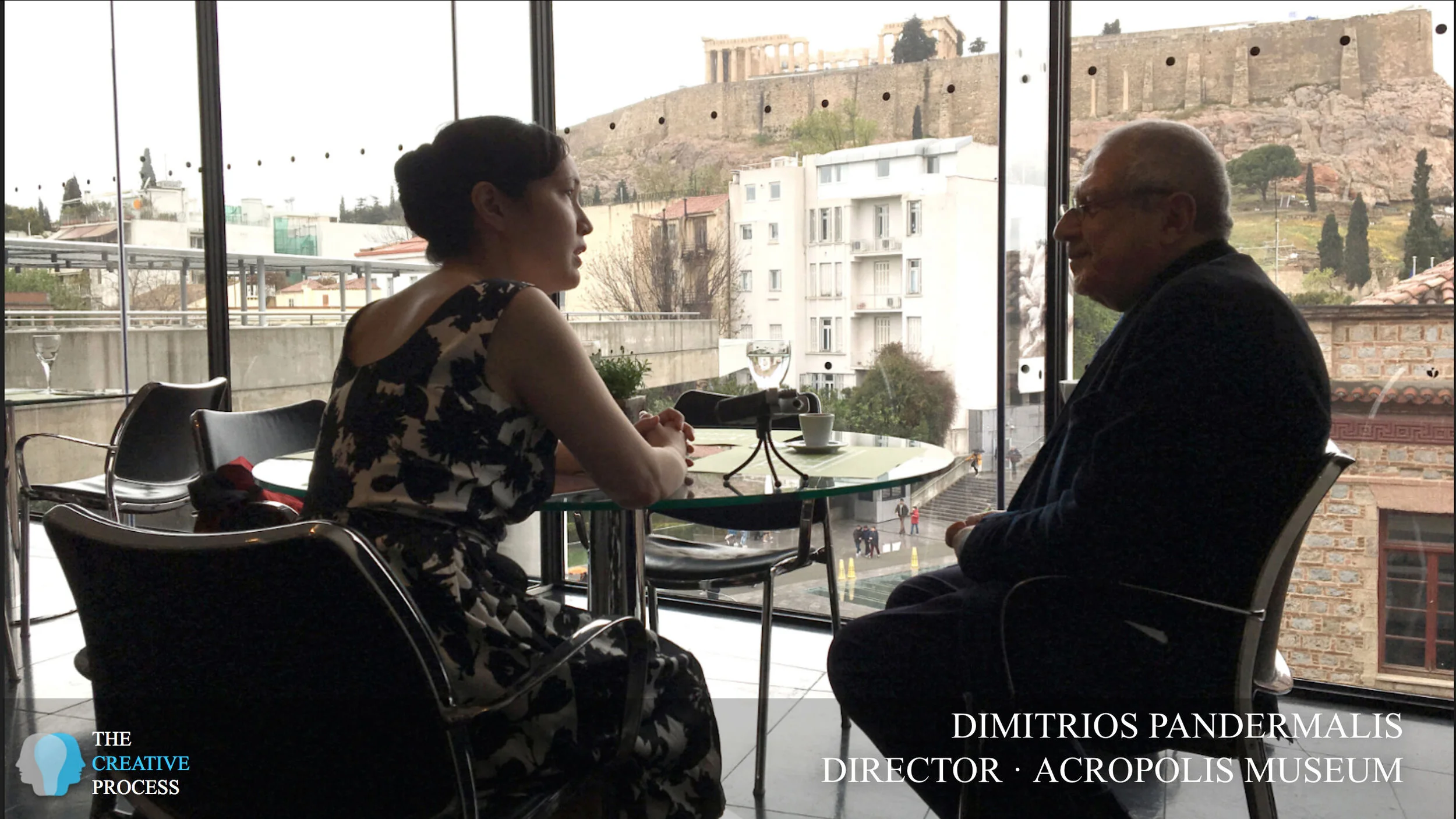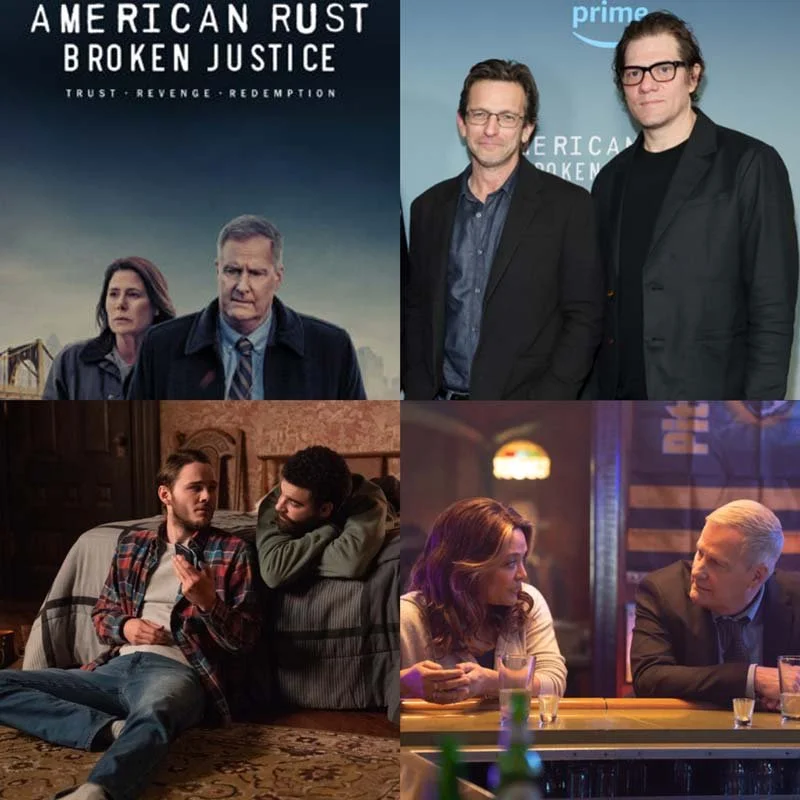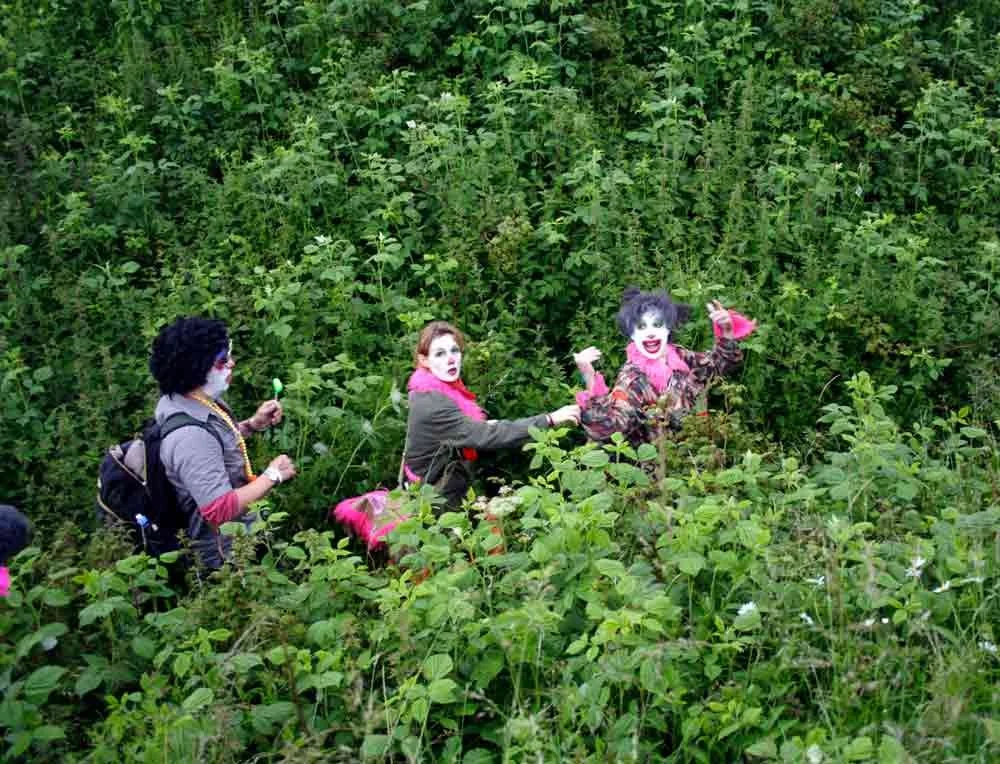Born in New Zealand, Jennifer Flay has lived in France since the early 80s, initially arriving with a French government scholarship to pursue her studies of Art History at the University of Nice. Having honed her skills working for prestigious Parisian galleries Daniel Templon and Ghislaine Hussenot, today, Flay is the internationally renowned Director of Paris’ contemporary art fair FIAC.
JENNIFER FLAY
If you create the conditions in which people feel comfortable interacting with art, there are some really beautiful things that can emerge from that encounter. Things that I think are life changing. And so that’s why I enjoy it... When I was at school, we were told that we could do absolutely anything what we wanted to do. Anything whatsoever. If we wanted to be aerodynamic engineers, there were no barriers. None. And probably it made me the person I am today. I always thought that I could do exactly what I wanted. People also say, in terms of FIAC, that the fact that I am a foreigner has helped me because it’s true I don’t feel burdened by convention because it’s always been done that way. I feel completely unfettered and I don’t feel bound by convention and the aim is to federate the cultural world around the events. I am not going to create upset gratuitously, but if I think something can be done differently and better, then I will definitely do it.
THE CREATIVE PROCESS
This is a special year for you. It's the 45th anniversary of FIAC.* You have just received the KIA Worldclass New Zealand Award. And your role in reinventing FIAC and restoring the French art scene is widely recognized in France.
FLAY
It's when I came to France that I encountered the gallery world, well, the world to start with, became involved just through attending openings. I became into contact for the first time with living artists. Living artists that were actually part of their creative process shaping the future of art. And I realized with a sort of a great sense of immediacy that things, for example, that Edouard Manet, the painter said, "One has to be of one's time. Il faut etre de son temps," resonated with me very, very strongly. And through the artists I met, I became interested in the gallery world also because, you know, this is the end of the 70s. But actually, in 1980, I said to be more precise, but still with the heritage of the thinking of the 70s, thinking that. You go back and look at the media of the time and a lot of magazines, specialist magazines, the role of the gallery was criticized. It was obviously a time where conceptual art practices were very much to the fore. The galleries were criticized in a way that doesn't happen far so much anymore. As somebody that was, let's say, making money on the backs of artists and so on.
So I was quite interested to find out what this was all about because the gallery world in New Zealand was pretty much inexistent at the time. So I did an internship at a gallery and quickly, within just a couple of days, found out that I saw people that were passionate about what they did, obviously met more artists in the context of the gallery itself, and for the first time in my life, really, apart from visiting museums and the prints and drawing section of the Auckland City Art Gallery where we didn't have physical contact with artworks, meaning picking them up, turning them around, looking at the back. In the gallery Catherine Issert I had this first contact with artworks and this physical, sensual relationship with them because when you're in a gallery not only do you hang them, but you carry them around, you wrap them up, you store them, you unwrap them, you carry them around again. So it's a very, very, very different relationship to the artwork than seeing a projected image, which is the way most art history students...a projected or a printed image, at least up until a certain period in your university career and until you have firsthand contact with the artworks themselves that was my experience up until then.
❧
I fell in love with a guy from Berlin who I had met through an exhibition. A Nice-Berlin exhibition that took place in Nice, followed him to Berlin and kind of fell into the beginning of the Neuen Wilden.
The New Sauvage painters, which was a German emanation or parallel of the Transavanguardia or what was happening in the States with Julian Schnabel, David Salle, a return to figuration, which was quite a radical shift from the 70s. So, yes, people like Salomé, Middendorf, Basquiat, Baselitz, Penck, those artists. And just being in Berlin, going to cafes at night, just leading a normal life and by cafes where these artists would be arguing, fighting sometimes about issues of contemporary art. And I realized how vital it was and the fact that I wanted to be involved, that I wanted to be involved with whatever I whatever knowledge I had acquired over the years, I wanted to put my efforts to support artists that were working on and ways which were yet to be found, yet to be analyzed, yet to be cataloged. Just to work was loving artists of my own generation.
So I did what I considered actually very deliberately like an apprenticeship, worked for three different galleries for a period of nine years. So three years, three years, three years, and in that time worked with many of the most important artists of their time. Ranging from Andy Warhol to Roy Lichtenstein to Jean-Michel Basquiat, Keith Haring, Robert Longo and Frans Weisz, Carl Andre, Richard Serra, Lawrence Weiner.
I realized that I was working directly with many of the people that I had studied in my art history courses, so it's kind of like, no, I mean, the answer to your question, did I imagine that I'd be running FIAC? No. Did I mention that I'd be working with those artists on a one to one basis? No. And, you know, sometimes at that time, but also now I kind of have to pinch myself, just like, This is real. This is happening. And today, when I think that this girl from New Zealand, me, is yes at the head of FIAC. And that we have venues in the Tuilleries Gardens where we work with the Louvre Museum and the Place Vendôme, where we work with the city of Paris, on the Avenue Winston Churchill, which we shut to traffic during the during the art fair upon my request to the mayor of Paris directly, but also in the Petit Palais, this year on the facade of the Grand Palais with some special artist projects using the techniques of video mapping. And this year also on the Place de la Concorde...I think, wow, that's really big. It's pretty major in terms of the scope of the of the fair, it's ambition.
❧
And I had this major, major, major car accident when I was in April 1999. I mean, we were driving my guy that was installing for me because we took down a show at night, and we were starting to get the gallery ready for the next show. Driving back from a show with my assistant from the gallery at night, at one o'clock when we finished work for the day, and we had this really, really bad car accident in which I had the near-death experience and broke my neck and was in a coma. And it took me a very, very, very long time to recover. I mean, I'm talking a couple of years, a few years, in fact.
But I think that medically I was considered consolidated with sequels, with permanent injury until about two and a half, three years after the accident.
Anyway, during that time, of course, I had some issues with memory. My short term memory was impaired because of some lesions, brain lesions. And so it was very difficult to run a business, of course. But the gallery was so important for me, so important. It was my life. Anyway, one thing led to another, and it became increasingly obvious that given my state of health, I wouldn't be able to continue my business because you can't run a business when you're in that state. And so I had to close my gallery, and I was devastated because, well, as I said, it was my life. And my accident, I lost my health permanently. I also lost the only child that I was ever expecting in my life. And actually ultimately even lost the gallery because I had to close it.
So I was in a very post-traumatic state of mind. And the reason for this was, was because I think really that France not only deserves to safeguard, we must safeguard her cultural institutions. I was in a position to do it. We must make sure that we leave strong institutions, strong cultural situation to the coming generation. It's a responsibility. Also, as somebody that wasn't not born French, as a foreigner if you like, I felt that it would be perhaps an opportunity for me to put something back into the French cultural situation that had left room for me.
❧
Of course, there's always been people that have been...nobody was expecting me to show up in France. And to create one of the most important galleries of my generation. So, of course, they were...I didn't know there was a little bit of jealousy involved here and there, but France had always left room for me, let me participate. And I wanted to give something back. You know, I was in this post-traumatic state of mind where I thought, you escaped death narrowly. I mean, I was in death for a while, but now things are different, and they've always been different since. You think differently after something like that.
❧
When I was at school, I went to a girls school because at the time that's that's what was done. But we were told that we could do absolutely anything we wanted, anything whatsoever. If we wanted to be aerodynamic engineers. I mean, there were no barriers, none, and probably, that also made me the person that I am today. I always thought that I could do exactly what I wanted. And people also say, in terms of FIAC, that the fact that I that I am a foreigner has helped me because it's true that I don't feel burdened by convention. I don't feel tied down by what people expect because it's always been done that way. I feel completely unfettered, and I don't feel bound by convention. And obviously the aim is to create, to federate the cultural world around the event. So I'm not going to create upset gratuitously, but if I think something can be done differently and better, then I will definitely do it.
Find us on Apple Podcasts, Spotify, Google Podcasts, Podcast Addict, Pocket Casts, Breaker, Castbox, TuneIn, Overcast, RadioPublic, Podtail, and Listen Notes, among others.
* Jennifer Flay and Mia Funk at FIAC’s offices. Interview took place in 2019, which was the 45th Anniversary of FIAC. This interview was conducted by Mia Funk with the participation of collaborating universities and students. Associate Interviews Producer on this podcast was Ally Chou. Digital Media Coordinator is Yu Young Lee. “Winter Time” was composed by Nikolas Anadolis and performed by the Athenian Trio.
This is an excerpt of a 7,000 word interview which will be published and podcasted across a network of participating university journals and national arts/literary magazines.
Mia Funk is an artist, interviewer, and founder of The Creative Process.



















































